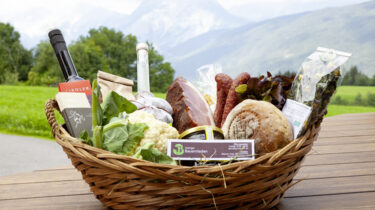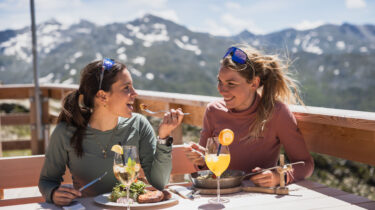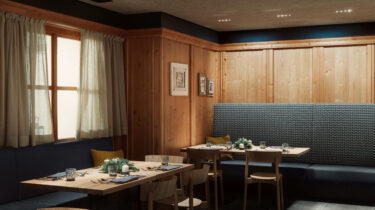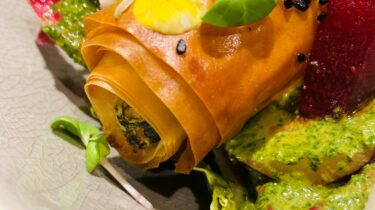What to eat in the Innsbruck region: five tips to tempt your taste buds in the place with city meets mountains
Last updated on 07.07.2025
Feeling hungry? Eateries in Innsbruck and the surrounding area serve up a delicious blend of authentic alpine cuisine and fresh culinary creations that lean into new trends. Whether you’re stopping in the city, visiting the local villages or exploring the mountains, foodies will discover a gastronomic scene that combines traditional fare with innovative dishes to mouth-watering effect. Here are five tips on how to experience this urban-meets-alpine flavour:
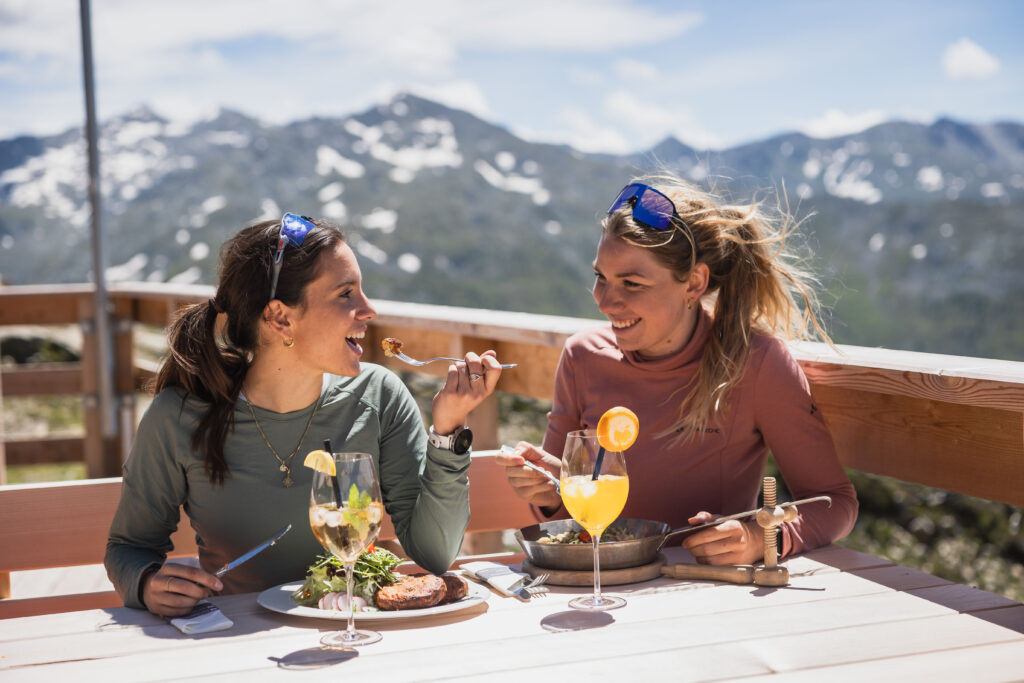
1. Regional and rooted in nature
If you’re the kind of person who likes to get to know the places and people you encounter on holiday, don’t miss the chance to visit a traditional Tyrolean inn (“Wirtshaus”). These establishments are easy to spot thanks to the distinctive green tavern sign in their entrance. There are plenty of these hostelries to be found outside the city centre, but you can also enjoy hearty home-made fare right in the heart of Innsbruck – at places like the Goldener Adler in the old town. Most Tyrolean inns are signed up to the “Bewusst Tirol” (“Consciously Tyrol”) initiative, which focuses on using local, sustainably cultivated produce. One prime example is the Landgasthof Stern, a country inn in Obsteig where cooking is done with what the locals would call “Butz und Stingl” – in other words, everything that grows in the garden goes into the dishes prepared, and nothing goes to waste. One of Tyrol’s highest inns is the Alpengasthof Praxmar at 1,600 metres above sea level, which dishes up appetising delicacies with a strong emphasis on game and fish hunted and caught locally.
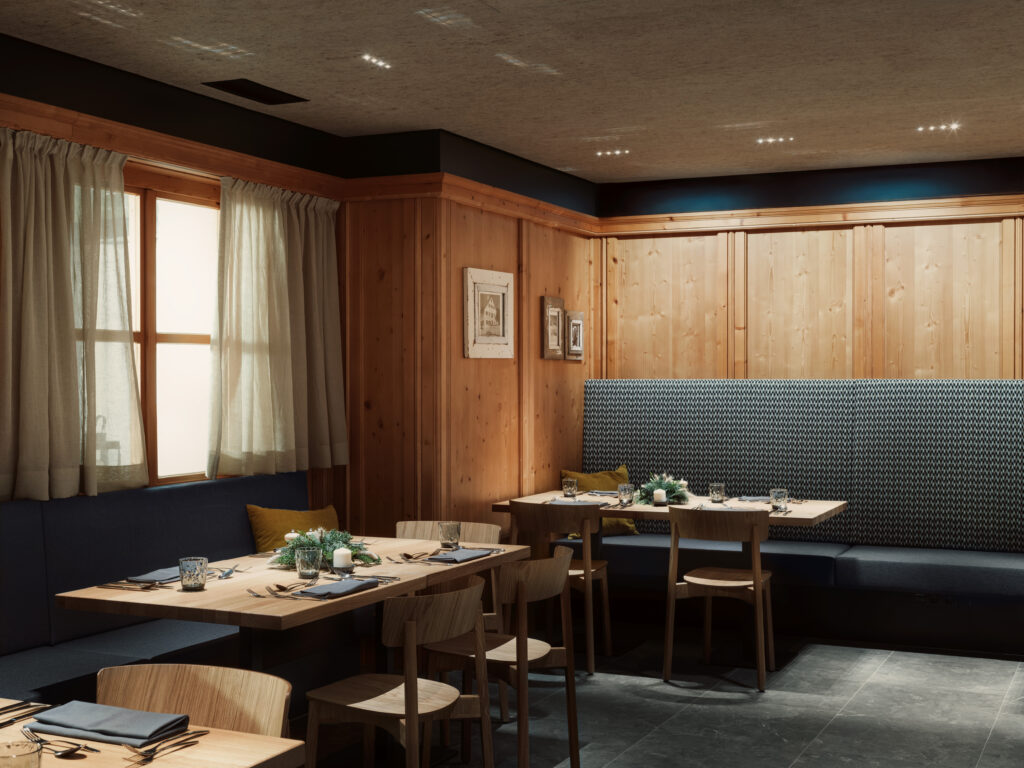
2. Premium cuisine, prepared with care
Fresh fish is also on the menu at the award-winning Schwarzfischer restaurant in Stams (which has two “Falstaff forks” and a Gault&Millau “toque” to its name), where the catches of the day are prepared in an open kitchen for all to see. Die Wilderin restaurant in Innsbruck’s old town also focuses on offering great food based on an open and honest concept – all the ingredients used here are locally sourced and personally selected by the chef. Sometimes you might even see the name of the cow that provided the meat being served shown on the menu! If you prefer to eat in more refined surroundings, you’ll feel right at home at Restaurant 141 by Joachim Jaud at the Alpenresort Schwarz in Mieming. Jaud’s sophisticated culinary style blends Austrian cuisine with French and Japanese flavours, recently earning him two Michelin stars along with various other prizes.
3. Hearty and wholesome – like the fresh alpine air
Whether you are pausing for a break on a leisurely walk or stopping to refuel on an energetic bike ride, the mountain inns around Innsbruck are perfect places for feasting, relaxing and taking a breather while you drink in the magnificent views. The Aldranser Alm and Rinner Alm inns are particularly popular with cyclists and e-bikers, with the Aldranser Alm being famous for its fantastic “Kaiserschmarrn” (traditional Austrian shredded pancakes) and the Rinner Alm tempting visitors with its pillowy-soft dumplings. If you are a connoisseur of good, hearty alpine cuisine, you’ll love the rustic Buzihütte in Innsbruck: nestled in the forest but still within easy reach by public transport, this eatery treats hungry guests to typically Tyrolean specialities. And once you’ve tucked into its famous “Eiterbeule” (literally “Pus-filled blister”) – schnitzel filled with cheese, sausage and a few secret ingredients – your stomach will soon stop rumbling! For the day after, a late breakfast is just the thing after all that physical activity, and the Adolf-Pichler-Hütte or the Birgitzer Alm are a couple of the best places for brunch (though you will have to book).
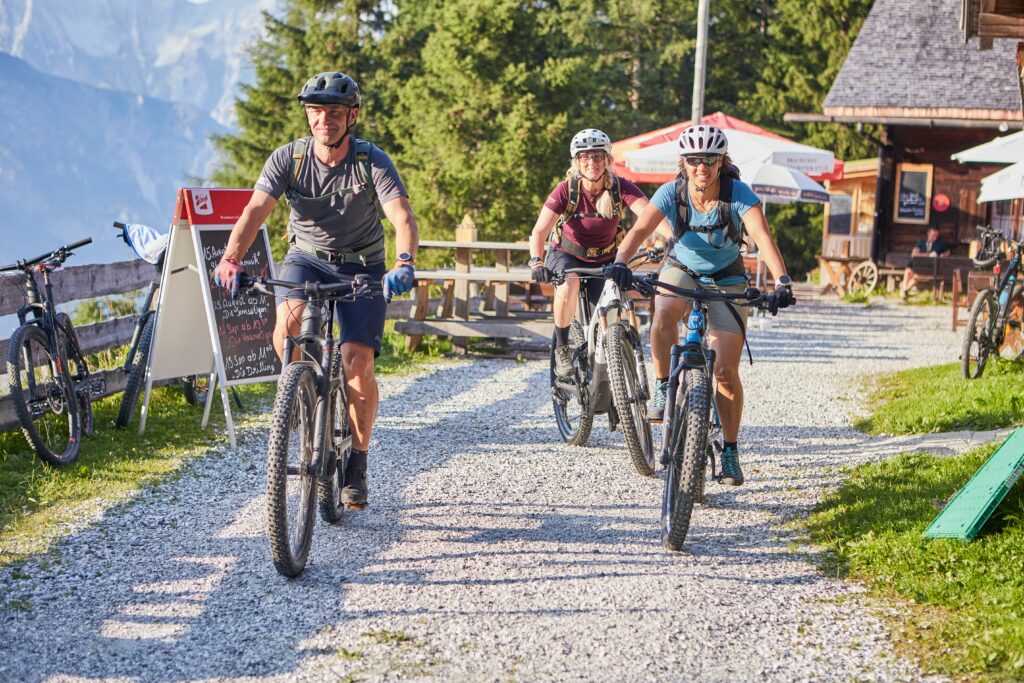
4. Original and on trend
The younger crowd is bringing fresh impetus to Innsbruck’s gastronomy scene and proving that you can grab a quick lunch without doing damage to the environment – after all, food “to go” doesn’t necessarily have to end up creating plastic waste. Georg Waldmüller and Martin Schümberg from the Futterkutter in the Tyrolean capital are doing their best to highlight this: from their eatery-on-wheels, they serve one-pot dishes inspired by recipes from all over the world in returnable glass jars. Meanwhile, D-Werk dishes up doner kebab wraps in paper rather than aluminium foil and serves other dishes on biodegradable bamboo trays. Incidentally, they also offer vegetarian and completely plant-based kebab options. For more fantastic vegetarian and vegan treats, head to One Green Table, where chef Sonja Kapplmüller conjures up a surprise set menu full of inventive flavour combinations and guests all eat together at the same table.
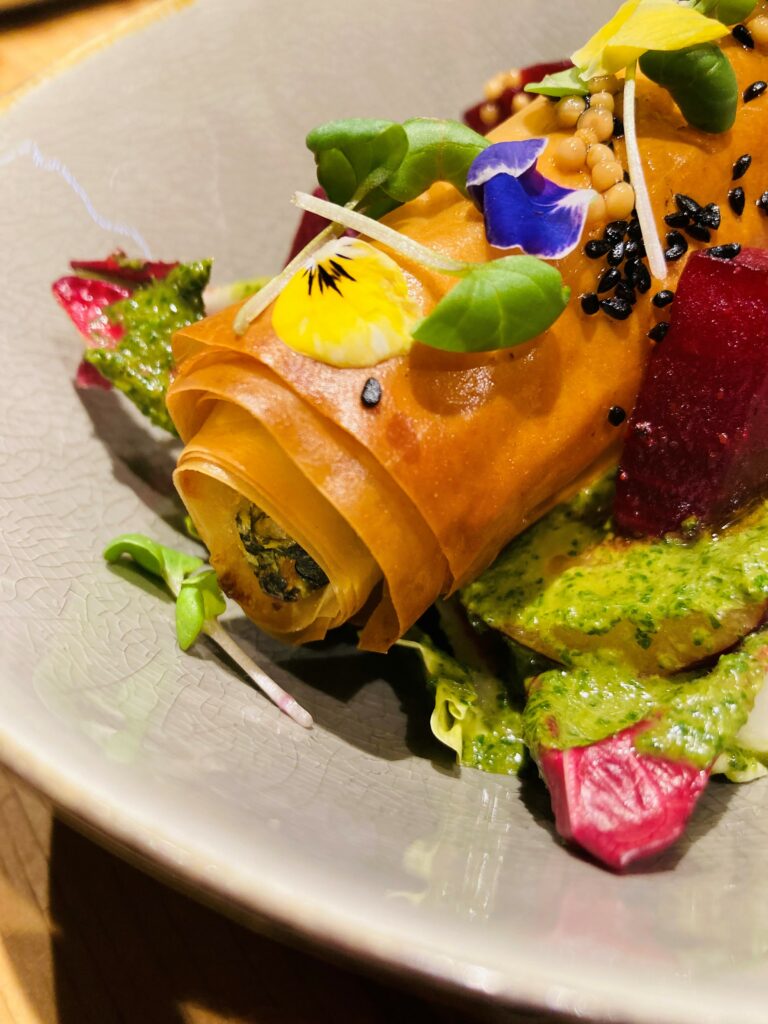
5. Fresh and locally farmed
Innsbruck’s market hall is a real feast for the senses: here you will find fragrant herbs and spices and aromatic delicacies in a kaleidoscope of colours. In the mornings, visitors can buy fresh fruit and vegetables from the surrounding farms – but there is still lots on offer later in the day too. The permanent outlets include everything from the “Käse-Kulinarium” cheese stall to a fish farm selling alpine prawns and the “BrotSchmiede” bakery. If you prefer a smaller and more select market experience, there are various farmers’ markets you can go to – such as the Saturday market at Wiltener Platzl, which is also surrounded by authentic local eateries. Every day is market day in the Innsbruck region, thanks to the numerous farm shops offering home-grown local produce around the clock. You won’t have to go far to find these foodie hotspots, especially at the western end of the Inntal Valley and on the Mieming Plateau: there are even “Genuss-Radweg” cycle routes designed for touring around them at your leisure on two wheels. Country taverns invite passers-by to stop for refreshments, while the farm shops draw people in with their tempting selection of Tyrolean cheese, ham and other delicacies.
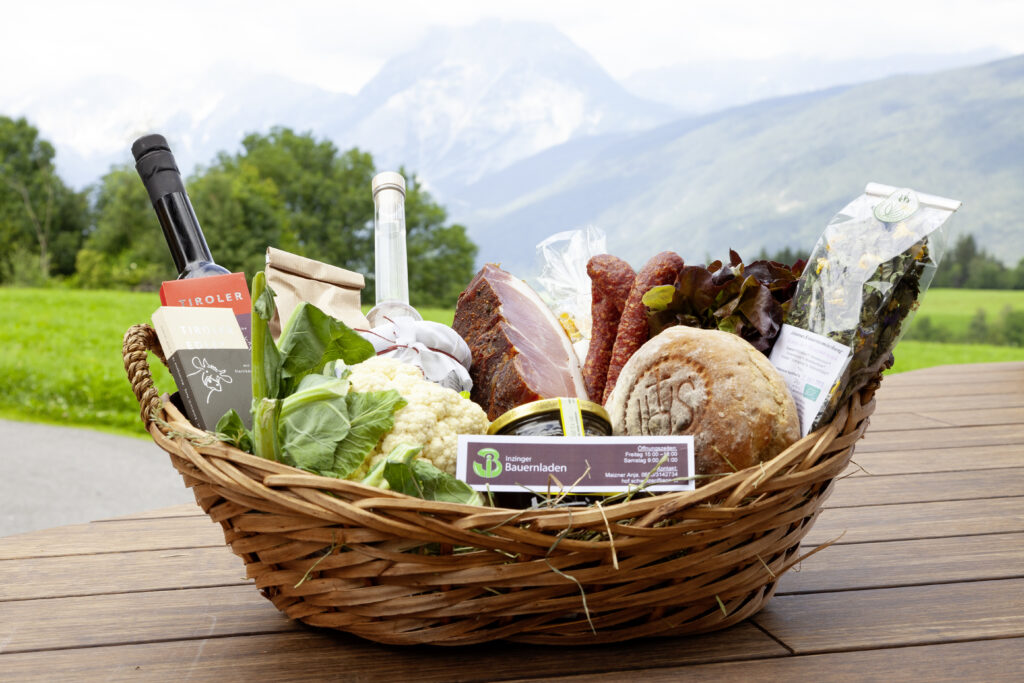
Bonus tip: try a cooking course at the Genusswerk
You can have a go at mastering the culinary arts yourself on one of the courses offered by the Genusswerk in Innsbruck. Join professional chefs and local farmers to learn how to make specialities like Tyrolean “Schlutzkrapfen” (filled pasta) or bake your own bread.
About the Innsbruck region
The Innsbruck region is unique in its symbiosis of vibrant urbane space and captivating alpine landscape. It covers both Innsbruck itself – the capital of Tyrol – and over 40 locations in the surrounding area, with six distinct tourist regions: the city, the Inntal valley, Kühtai-Sellraintal, the Mieming Plateau and the south and west regions. Innsbruck offers all the sights and sophistication of a thriving city, yet sporting thrills and opportunities to conquer your next peak are never very far away. The free Welcome Card offers guests the chance to experience the region in all its diversity, with access to various attractions and free use of local public transport. The official destination management organisation for the Innsbruck region is Innsbruck Tourismus. Its 100 or so employees and eleven tourist information offices are on hand to help you enjoy unforgettable holiday experiences in true harmony with our local communities and natural surroundings.
Further links
Website: www.innsbruck.info/en/
Blog: www.innsbruck.info/blog/en/
Facebook: www.facebook.com/Innsbruck
Instagram: www.instagram.com/innsbrucktourism
X: www.twitter.com/InnsbruckTVB
YouTube: www.youtube.com/user/InnsbruckTVB
Pinterest: www.pinterest.at/innsbrucktvb/_created

